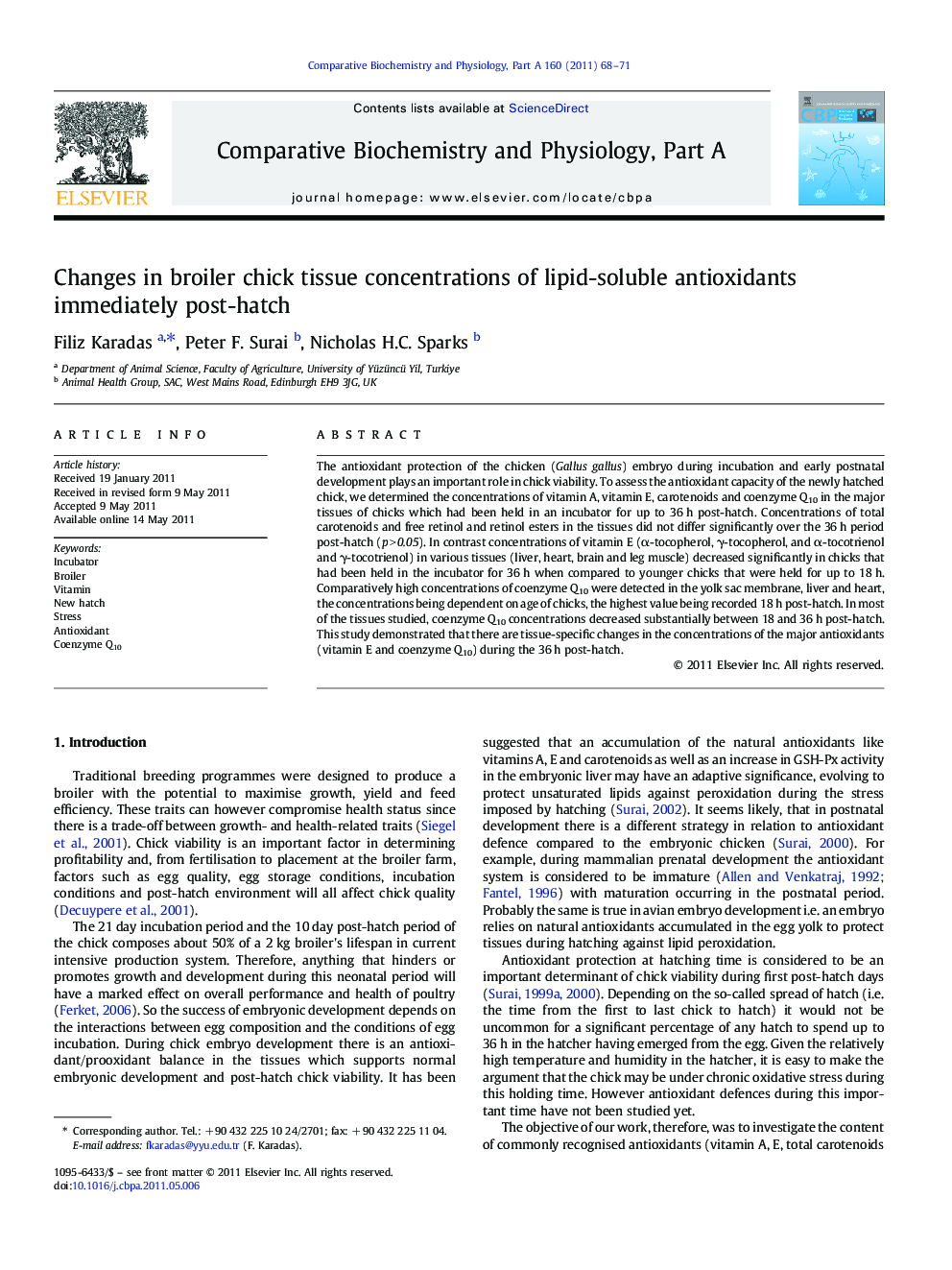| Article ID | Journal | Published Year | Pages | File Type |
|---|---|---|---|---|
| 1973308 | Comparative Biochemistry and Physiology Part A: Molecular & Integrative Physiology | 2011 | 4 Pages |
The antioxidant protection of the chicken (Gallus gallus) embryo during incubation and early postnatal development plays an important role in chick viability. To assess the antioxidant capacity of the newly hatched chick, we determined the concentrations of vitamin A, vitamin E, carotenoids and coenzyme Q10 in the major tissues of chicks which had been held in an incubator for up to 36 h post-hatch. Concentrations of total carotenoids and free retinol and retinol esters in the tissues did not differ significantly over the 36 h period post-hatch (p > 0.05). In contrast concentrations of vitamin E (α-tocopherol, γ-tocopherol, and α-tocotrienol and γ-tocotrienol) in various tissues (liver, heart, brain and leg muscle) decreased significantly in chicks that had been held in the incubator for 36 h when compared to younger chicks that were held for up to 18 h. Comparatively high concentrations of coenzyme Q10 were detected in the yolk sac membrane, liver and heart, the concentrations being dependent on age of chicks, the highest value being recorded 18 h post-hatch. In most of the tissues studied, coenzyme Q10 concentrations decreased substantially between 18 and 36 h post-hatch. This study demonstrated that there are tissue-specific changes in the concentrations of the major antioxidants (vitamin E and coenzyme Q10) during the 36 h post-hatch.
